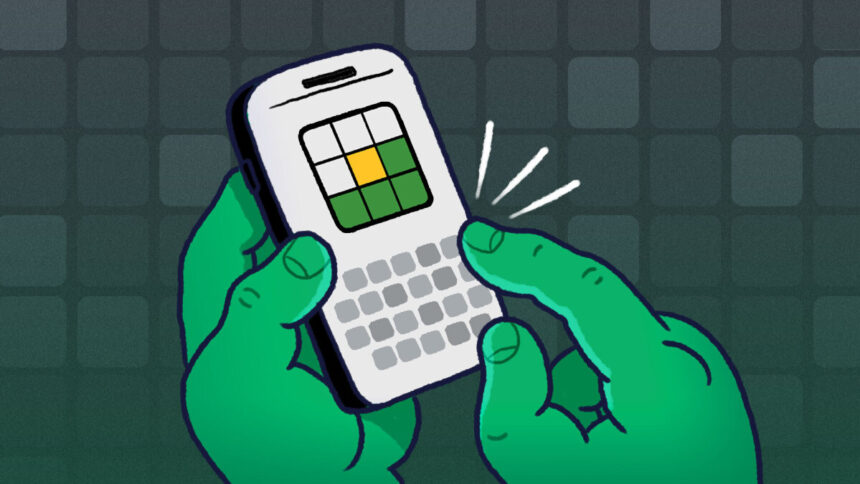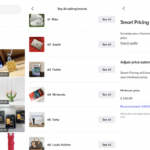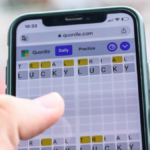Wordle Solution for April 28, 2025: Tips and Tricks
Searching for the answer to today’s Wordle? Look no further! Alongside the solution, we’ve got some helpful hints and strategies to enhance your gameplay. This particular puzzle is a bit tricky; it took me six tries to solve it. Warning: Spoilers for Wordle #1,409 below! If you’re ready for some guidance (and the answer), keep scrolling!
Playing Wordle: A Quick Guide
You can play Wordle here on the New York Times website. Every day at midnight local time, a new puzzle is available.
Begin by entering a five-letter word. The letters will change color based on their correctness: they turn green for correct letters in the right position, yellow for correct letters in the wrong positions, and gray if the letter doesn’t appear in the word. For further insights, check out our comprehensive guide and advanced strategies. Additional information is available at the end of this post, so stay tuned.
Let’s dive into the hints!
Are there unique letters in today’s Wordle?
In the world of letters, consider the phrase ETAOIN SHRDLU to identify common letters. (Keep this in mind! Say it like “Edwin Shirdloo,” as if he’s a friend.)
For today, we have two letters from this mnemonic that are fairly common, one of which is less so.
Can you provide any hints for today’s Wordle?
A placeholder or stand-in.
Are there any repeated letters in today’s Wordle?
Yes, there is one letter that appears twice today.
Counting the vowels in today’s Wordle?
The word contains one vowel and an additional “sometimes” vowel.
What’s the first letter of today’s Wordle?
The word begins with the letter D.
What’s the final letter of today’s Wordle?
The word concludes with the letter Y.
What’s the answer to today’s Wordle?
Here it is: Today’s secret word is DUMMY.
My Journey to Solving Today’s Wordle
The process started with guesses: RAISE, TOUCH, and BLOND. Following that, I tried MUGGY and then DUMPY, which led me to the answer, DUMMY.
Wordle 1,409 6/6




Answer to Yesterday’s Wordle
Yesterday’s puzzle was more straightforward. The hint? “Similar to an untended garden or lawn.” The answer had three common letters along with two that are less common.
The solution was WEEDY.
Fundamentals of Wordle
The aim of Wordle is to unveil the daily concealed word. Once you launch the game, an empty letter grid awaits you. It’s your turn to make the first move by entering any five-letter term.
What do you think so far?
Using the color cues is essential for deciphering the word: Green indicates a letter that is correct and properly placed. (For instance, if you guess PARTY and the answer is PURSE, letters P and R will be green.)
-
Yellow signifies that the letter exists in the word but is not in the position where you guessed it. (For example, if you guess PARTY, but the word is ROAST, letters R, A, and T will show as yellow.)
-
Gray means the letter is entirely absent from the solution. (If PARTY results in all gray, you know the solution isn’t PURSE or ROAST.)
Keep these principles in mind as you make your next guess, striving to identify the correct word before your opportunities run out. Remember, you have six attempts before it’s game over.
Optimal Starting Words for Wordle
Selecting the right first guess is crucial. The most effective starters usually incorporate frequent letters, increasing your chances of some yellow or green indicators to inform your next moves. Although there’s no definitive “best” initial word, the New York Times’s Wordle analysis bot suggests beginning with one of the following:
-
CRANE
-
TRACE
-
SLANT
-
CRATE
-
CARTE
Additionally, analysis from MIT reveals that starting with words like these can most effectively narrow your options in the first round:
-
SALET
-
REAST
-
TRACE
-
CRATE
-
SLATE
Other valid choices include ARISE or ROUND. While using words like ADIEU or AUDIO brings more vowels into the mix, emphasizing consonants at the start with words like RENTS or CLAMP might serve better. Experiment with different strategies and see which one yields the best results.
Winning Strategies for Wordle
For those who take the game seriously, a few strategic guides may be beneficial. One guide focuses on leveraging consonants effectively, while another highlights approaches centered on common letters. An advanced guide elaborates on a triad of techniques to uncover clues while maximizing your chances for a swift victory.
The distinguishing factor between those who succeed and those who struggle in Wordle is in how the former approach their guesses: they actively gather insights from the letters. For instance, if you determine the word ends in -OUND, avoid unnecessary guesses like MOUND, ROUND, SOUND, and HOUND; instead, combine those consonants and opt for MARSH. If the H shows up in yellow, you’re closer to the solution.
A further note on strategy: the original iteration of Wordle contained a fixed list of around 2,300 solution words. Post acquisition by the NYT, the game now features an editor who selects the answers. Occasionally, words may be slightly more challenging than prior choices, or thematically relevant. For example, FEAST was the answer one Thanksgiving, underscoring that there could be a theme involved.
Exploring Alternatives to Wordle
If the thrill of five-letter guessing games has captivated you, consider exploring some of the best alternatives, categorized by difficulty:
-
Wheeldle, which allows for consecutive puzzle challenges.
-
Dordle and Quordle, where you tackle two (Dordle) or four (Quordle) challenges simultaneously using the same guesses. There’s also Octordle for eight puzzles, and Sedecordle, with 16.
-
Waffle, which presents scrambled five-letter words in a grid for you to rearrange until you solve.
-
Absurdle, where the solution changes with each guess yet still aligns with prior feedback. You must strategically guide it to a point with only one potential answer left, then make that final guess.
-
Squabble, where you compete against others in real-time Wordle matches. Taking too long to guess results in damage; the last player remaining wins.
-
Antiwordle, where your goal is to avoid guessing the word of the day. You must re-use any letters that you guessed correctly; the longer it takes you, the better your performance.












